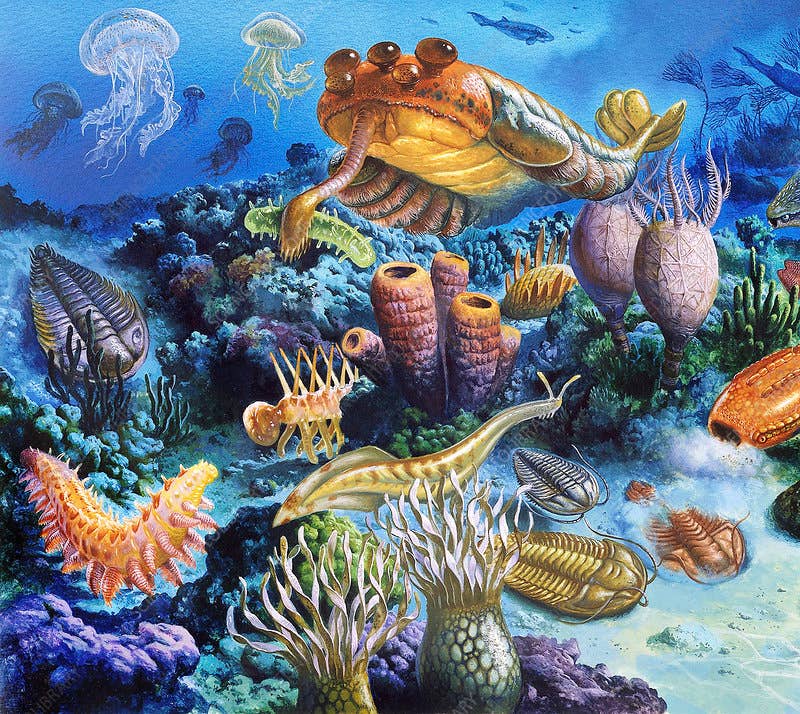Ancient genomes reveal hidden history of human adaptation
The use of ancient DNA, including samples of human remains around 45,000 years old, has shed light on a previously unknown aspect of humans

[Nov. 18, 2022: Lee Gaskin, The University of Adelaide]
A new study co-led by a University of Adelaide researcher has used ancient DNA to challenge the prevailing view of human adaptation. (Credit: iStock)
The use of ancient DNA, including samples of human remains around 45,000 years old, has shed light on a previously unknown aspect of human evolution.
Dr Yassine Souilmi, Group Leader at the University of Adelaide’s Australian Centre for Ancient DNA, co-led the new study published in Nature Ecology and Evolution.
“It was widely believed the genetics of our human ancestors didn’t change due to environmental pressures as much as other animals, due to our enhanced communication skills and ability to make and use tools,” Dr Souilmi said.
“However, by comparing modern genomes with ancient DNA, we discovered more than 50 cases of an initially rare beneficial genetic variant becoming prevalent across all members of ancient human groups.
“In contrast to many other species, evidence for this type of adaptive genetic change has been inconsistent in humans. This discovery consequently challenges the prevailing view of human adaptation, and gives us a new and exciting insight into how humans have adapted to the novel environmental pressures they encountered as we spread across the planet.”
Related Stories
Co-lead author Dr Ray Tobler - an Adjunct Fellow at the University of Adelaide and a DECRA fellow at the Australian National University – said examining ancient DNA has been critical in unlocking the secrets of human evolution.
“We believed historical mixing events between human groups might have hidden signs of genetic changes in modern human genomes,” Dr Tobler said.
“We examined DNA from more than 1,000 ancient genomes, the oldest which was around 45,000 years old, to see if certain types of genetic adaptation had been more common in our history than studies of modern genomes had suggested.”
Each human symbol represents a sample, and the colours indicate different populations classified into broad groupings according to archaeological records of material culture and lifestyle (colours indicated at the bottom left-hand side. (CREDIT: Nature Ecology and Evolution)
Professor Christian Huber, a senior author of the research paper, is an Adjunct Fellow at the University of Adelaide and an Assistant Professor at Penn State University.
“The use of ancient genomes was crucial because they preceded major historical mixing events that have radically reshaped modern European genetic ancestry,” Professor Huber said.
a, Schematic of the West Eurasian population history model used to explore the statistical properties of our analytical pipeline and the impact of historical bottlenecks and admixture on the FDR. (CREDIT: Nature Ecology and Evolution)
“This allowed the recovery of historical signs of adaptation that are invisible to standard analysis of modern genomes.”
Established in 2005, the Australian Centre for Ancient DNA is a world leader in the research and development of advanced ancient DNA approaches for evolutionary, environmental and conservation applications.
Researchers based at the Mayo Clinic, the Garvan Institute of Medical Research, the Max Planck Institute for the Science of Human History in Germany, the University of New South Wales, and Massey University in New Zealand also contributed to the research paper.
Note: Materials provided above by The University of Adelaide. Content may be edited for style and length.
Like these kind of feel good stories? Get the Brighter Side of News' newsletter.
Joshua Shavit
Science & Technology Writer | AI and Robotics Reporter
Joshua Shavit is a Los Angeles-based science and technology writer with a passion for exploring the breakthroughs shaping the future. As a contributor to The Brighter Side of News, he focuses on positive and transformative advancements in AI, technology, physics, engineering, robotics and space science. Joshua is currently working towards a Bachelor of Science in Business Administration at the University of California, Berkeley. He combines his academic background with a talent for storytelling, making complex scientific discoveries engaging and accessible. His work highlights the innovators behind the ideas, bringing readers closer to the people driving progress.



